Learn how to grow basil, harvest and preserve it, and other tips including cooking tips and recipe ideas for this lovely aromatic herb.
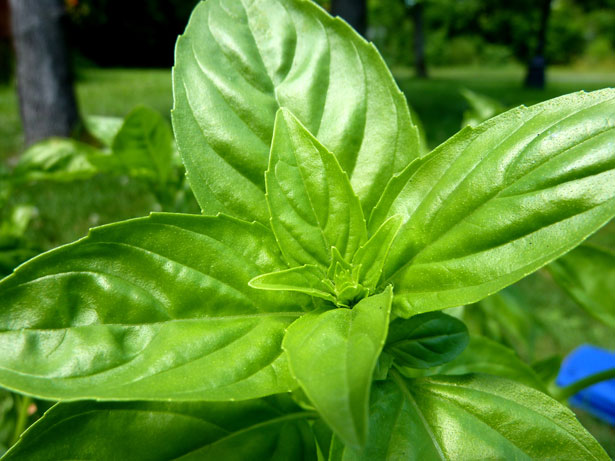
Growing and using basil is a must for any gardener who likes to cook. Basil is one of the most common and frequently used herbs. It is probably best known for its use in Italian cuisine, but it’s also popular in Thai recipes.
How to Grow Basil
Basil is easy to grow from seed. It germinates in about two weeks and you can transplant seedlings in the garden a month later providing the weather where you plant it is warm.
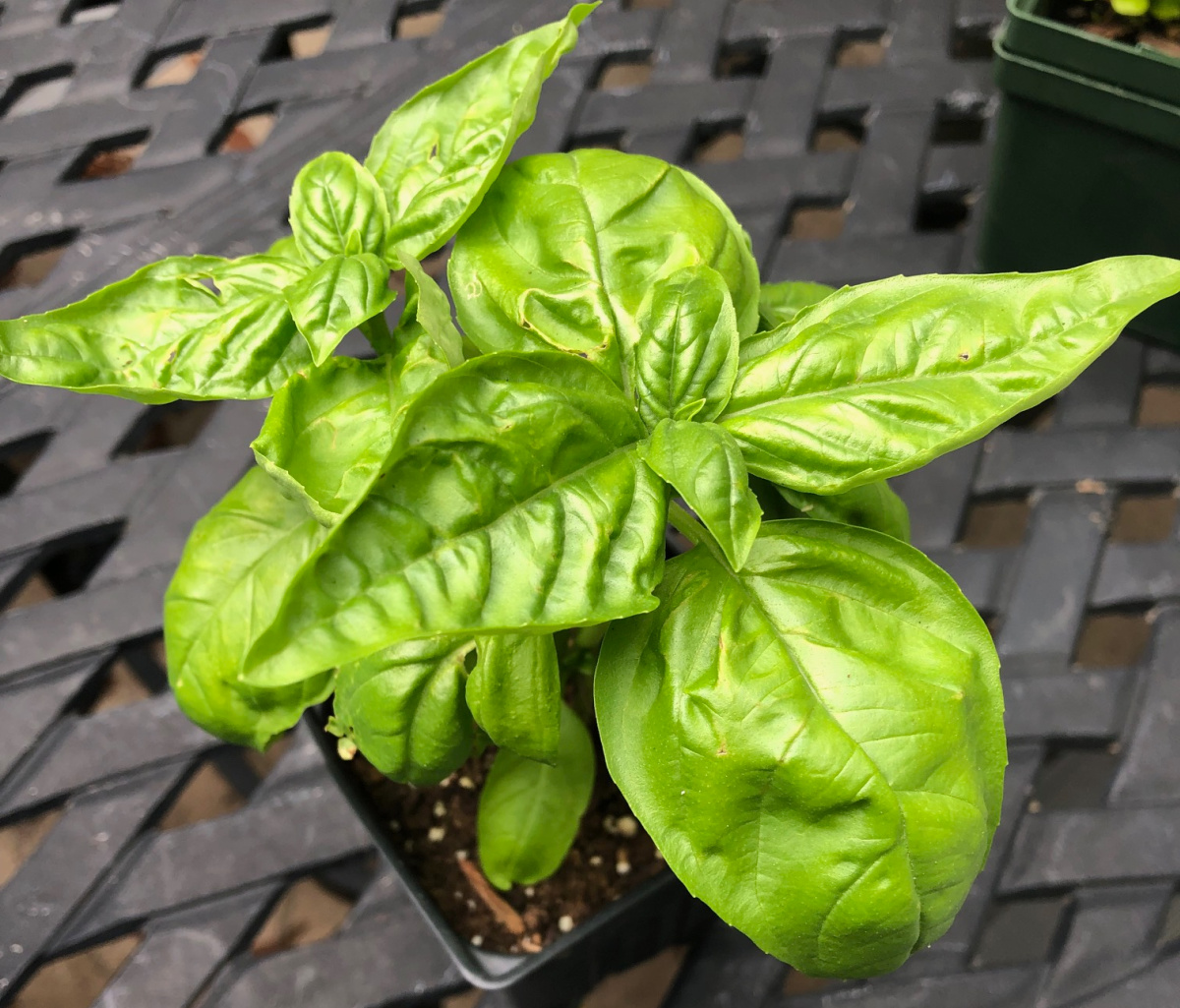
You can also buy small basil plants from the nursery. I've also bought some of the basil plants sold in pots in the grocery store. Often you can separate the pot into two or three plants.
Basil hates the cold weather. In my area, I never plant basil outside before June, well after the last frost. Basil can be planted in the ground with tomatoes, other vegetables, or herbs. However, I prefer planting it in pots near a door. This way you can pop out and snip a little whenever you are cooking.
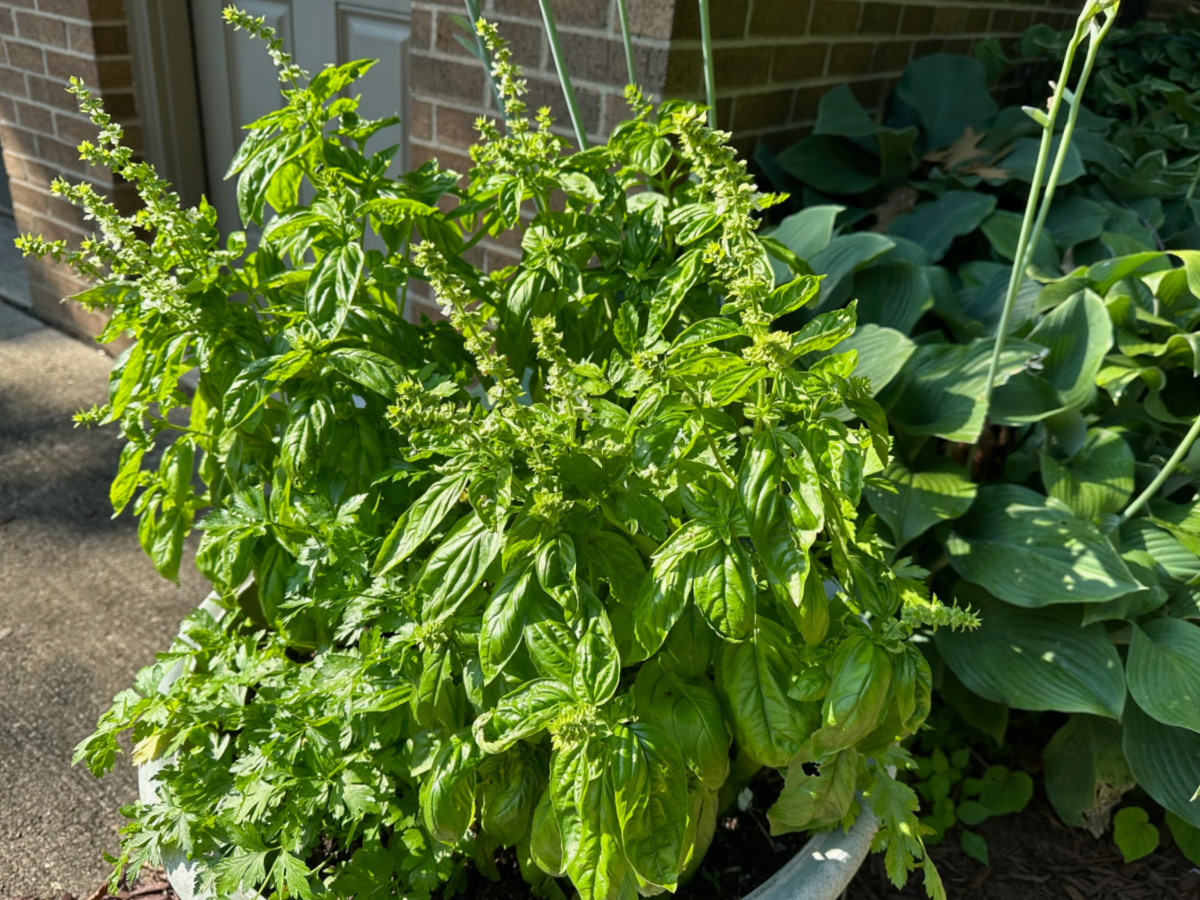
Growing Basil in Containers
You can easily grow basil and other herbs in large pots. I do this every year near the garage door where it's sunny. I've also grown it with other herbs in a strawberry pot, a large burlap sack, and in a vertical garden using a wooden pallet.
Just be sure that whatever you use that it has drainage holes. Otherwise, you may end up with root rot and dead plants.
Varieties of Basil to Grow
There are many different types of basil that you can grow in the garden. I prefer Genovese aka "sweet basil," as it's a good performer in the garden and has great flavor for cooking.
Lettuce leaf basil is a fun one to try as it has large leaves that you can throw into a salad, add to sandwiches, or use the whole leaves as wraps.
Other good varieties to try are Thai basil which has pretty purple stems and flowers, and licorice aromatic leaves, and lemon basil with small leaves with a light citrusy scent.
A few that look great in the garden border are the many shades of red and purple basils such as Dark Opal, Cinnamon, and Purple Ruffles.
Tips for Growing Basil
- Basil roots quickly in water. Take some cuttings to give you and your friends more plants.
- Basil loves the sun. Try to plant it somewhere where it can receive plenty of sunlight.
- Basil hates cold weather. Plant it late outdoors and try to cover it if there is a cold snap with a sheet or black plastic bag.
- If you live in the south or other hot area you may want to consider mulching between plants. This will keep out weeds and help hold moisture.
- Keep your plants growing and bushy by harvesting often. Once your plants are about 8 inches tall you can prune stems just above the area where the leaves branch out. This will keep them producing for the whole summer. If you lose track and the plant starts to bloom be sure to at least remove the flowers.
- Though you can grow basil indoors, it will most likely need a grow light as it will not get as many hours of full sun indoors.
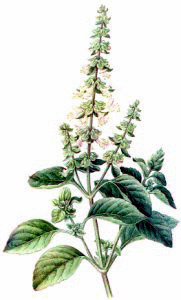
Facts About Basil
- Scientific name: Ocimum basilicum
- Plant Type: Annual
- Sun: Full Sun
- Water: Moderate
- Height: 12 -24 inches
- Width: 12 inches
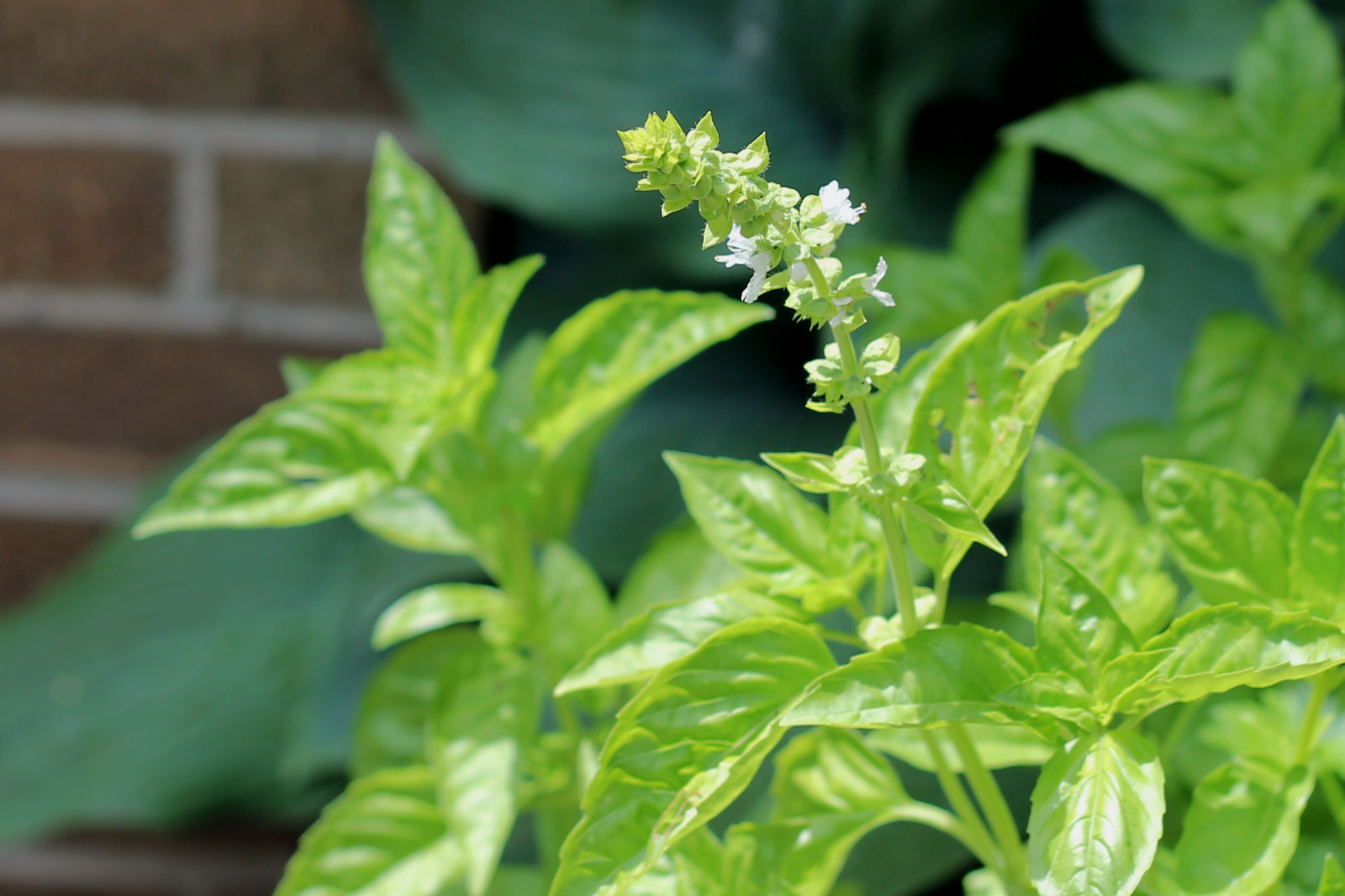
Harvesting and Pruning Basil
Harvest your basil by cutting slightly above a set of leaves known as the leaf node. This promotes new growth outward and a bushier plant. Don’t let it produce flowers. As soon as you see a flower bud, pinch it off so the plant continues to grow, putting energy into the leaves.
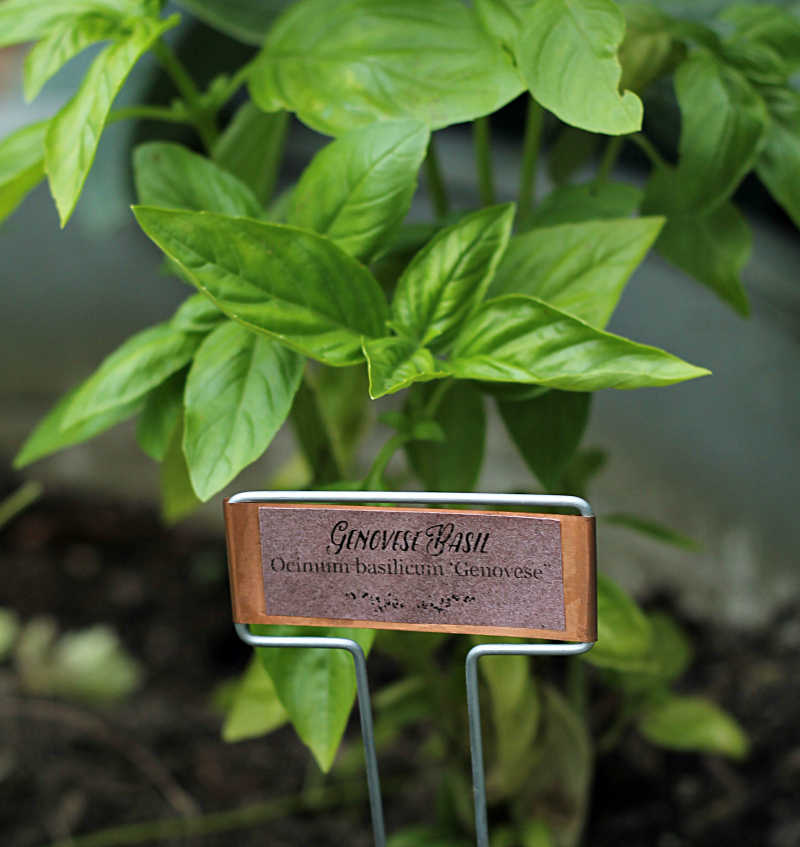
Preserving Basil
Basil can be dried by laying on a screen that provides airflow, so that mold does not grow. Once dry, you can crush the leaves and place them in an airtight container or plastic bag.
You can also freeze basil leaves. Chop it up and place it into ice cube trays with a little olive oil or water. Once frozen, you can pop out the cubes and place them in a plastic bag and back into the freezer. This way you can easily grab one or two when you need it.
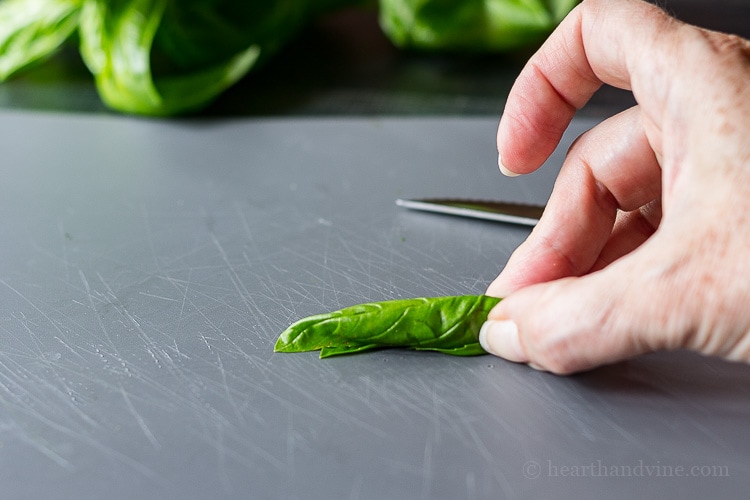
Cooking with Basil
Outside of making pesto, when cooking with fresh basil, it is best to wait until the recipe is almost done cooking or even finished. This delivers the best flavor to the dish, although sometimes I add some in the middle and the end of the cooking process.
You can chop the basil or simply tear the leaves when adding it to your recipe.
Often I like to make a “chiffonade,” which is done by stacking several leaves on top of each other, rolling them up together like a tiny cigar, and slicing them thinly. You end up with ribbons of basil, which works well cooking and looks pretty as a finishing touch.
Lastly, consider infusing vinegar or oil with basil for a lovely gift.

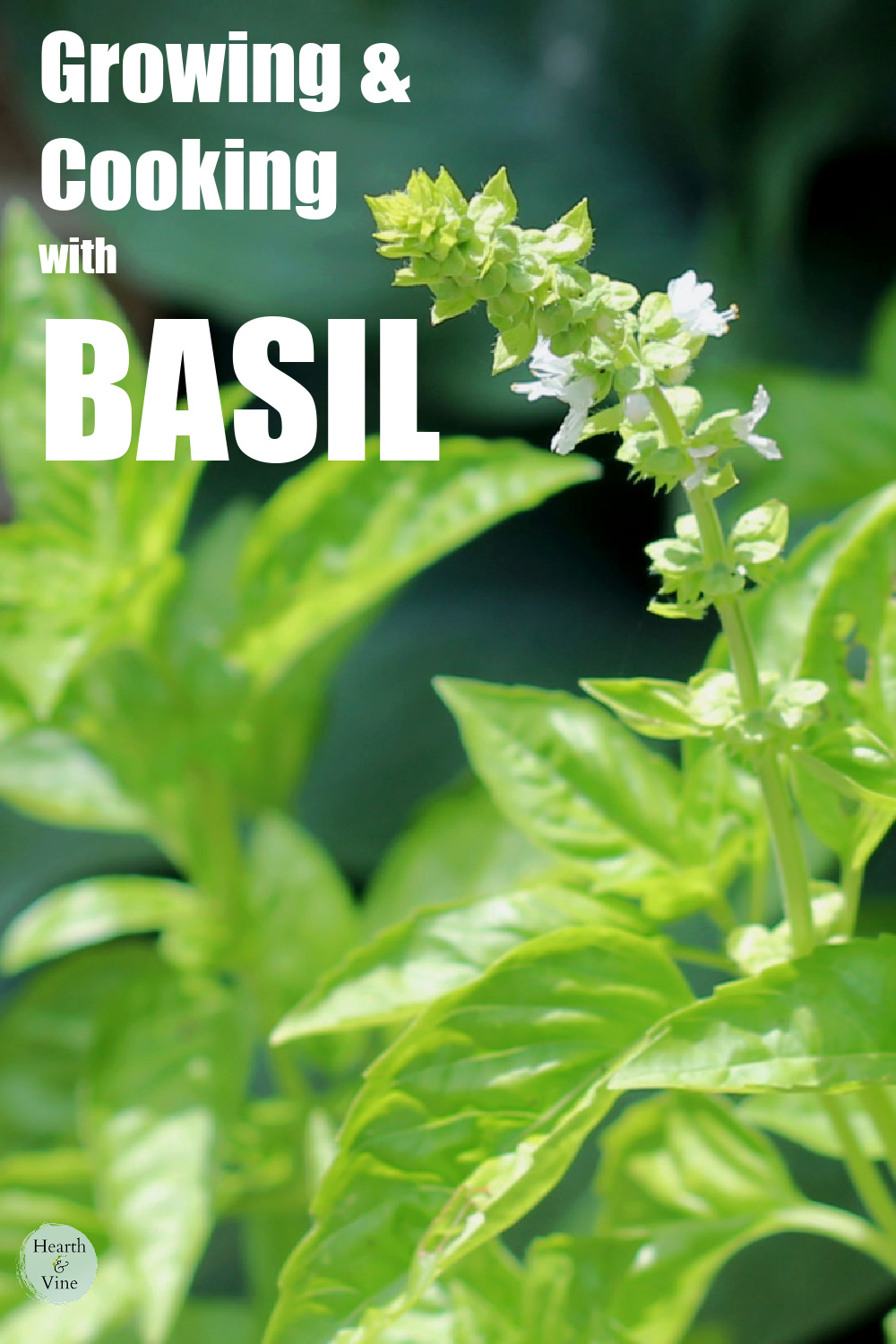


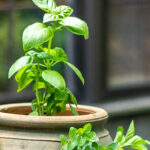
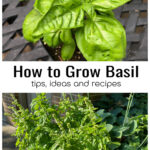

B
I LOVE basil, it always does very well in my container garden, and cooking with it is the best! Side note, caprese is one of my fave salads!
B
http://www.naughteebits.com
Patti
B,
I think we can find lots of people that share our love of basil and 'Caprese.' It's so easy to grow even if you have to start over every year. Thanks for stopping by.
Patti